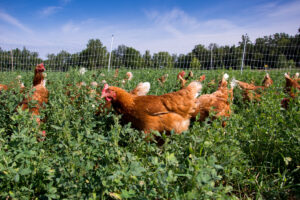| Best for | Product |
|---|---|
| Best Overall | The World Encyclopedia Of Fish and Shellfish |
| Best for the Science-Minded | Fish for Kids: A Junior Scientist’s Guide to Diverse Habitats, Colorful Species, and Life Underwater |
| Most Comprehensive | The Secret Life of Fish: The Astonishing Truth about our Aquatic Cousins |
| Best Feel-Good Story | Fish in a Tree |
| Best for Fishing | Let’s Go Fishing: A Book for All Young Anglers |
| Best Non-Fiction Book | Freaky, Funky Fish: Odd Facts about Fascinating Fish |
For those of you who love fish, you know there’s so much to explore. There are tons of fish all over the world, with so many details to learn about each. When teaching children about them, the text has to be captivating. With nonfiction books, it’s important that the text, photographs, and illustrations draw in young readers. If the book is engaging and the appropriate reading level, you may soon have a junior scientist on your hands!
Some books are perfect for science-minded kids. Other books tell a fictional story with lessons that can carry over into your child’s life. Sometimes, you want to build a library that’s all about fish books. If that’s the case, you will love the selection we’ve highlighted below. We chose fiction books, nonfiction books, funky books, and even a book about fishing!
Further, we break down what each book is about. We also share some insights from real customers who have purchased this book and read it along with their kids. Whether you’re a parent, grandparent, aunt, or teacher shopping for your little ones, you’ll find a book for them here. At the end of this article, we help you identify criteria you should consider. We also highlight the main types of books about fish and answer frequently asked questions.
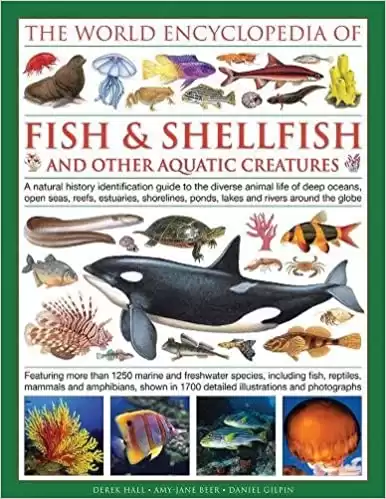 Check Amazon
Check Amazon- Over 500 pages of information on 1250 different marine and freshwater fish species
- Great book if you are looking to expand your knowledge on the different fish species
- Fish for Kids: A Junior Scientist’s Guide to Diverse Habitats, Colorful Species, and Life Underwater
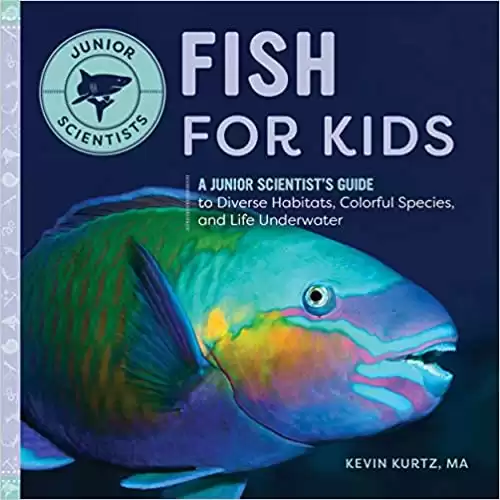 Check Amazon
Check Amazon- Provides information on the diverse habitats of fish
- Filled with fun facts
- 88 pages of easy-to-read texts and colorful illustrations of fish
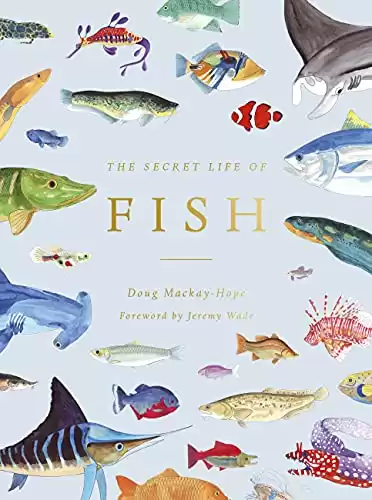 Check Amazon
Check Amazon- 224 pages.
- Introduces readers to 50 distinct fish species.
- Written by Doug Mackay-Hope, the head of development for BBC’s Natural History Unit in Bristol.
 Check Amazon
Check Amazon- 320 pages.
- Customers recommend this book for readers ages 9 through 11.
- A New York Times Bestseller.
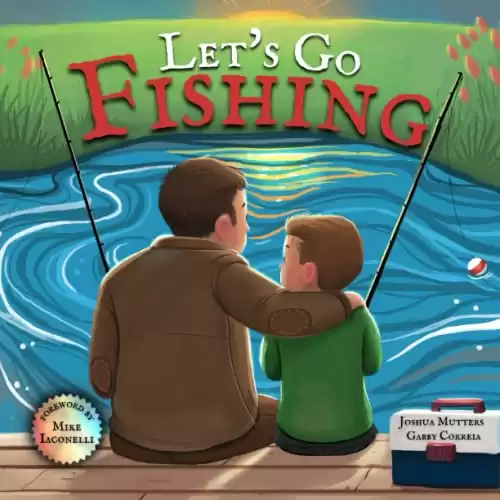 Check Amazon
Check Amazon- 35 pages.
- Teaches readers about 25 freshwater fish while showing a diverse group of characters catching them.
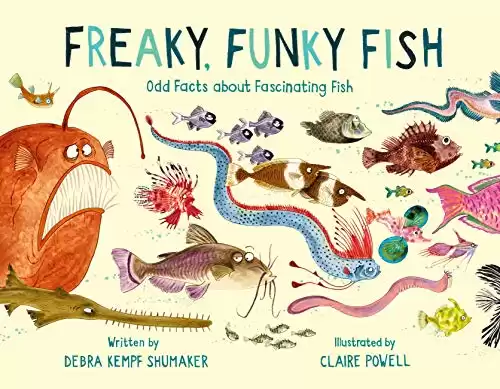 Check Amazon
Check Amazon- 32 pages.
- Customers recommend this book for children ages 3 through 7.
- A picture book with a scientific yet child-friendly underpinning.
A-Z Animals Top Picks for Children’s Books About Fish
#1 Best Overall: The World Encyclopedia of Fish and Shellfish by Daniel Gilpin, Amy-Jane Beer, and Derek Hall
The best overall children’s book about fish is The World Encyclopedia of Fish and Shellfish by Daniel Gilpin, Amy-Jane Beer, and Derek Hall.
This book has a hearty introduction that incorporates natural history. It also offers incredibly illustrated directories of 1,250 marine species. Further, it compiles 1,700 detailed illustrations and photographs. It’s definitely the type of book that your kid will turn to over many years.
There is a wealth of information in this book that might be too complex for younger readers. Despite that, it can certainly of interest for young, growing minds that seek to learn more about fish. The book has a total of 512 pages. With such depth, it can remain a resource for years as your child explores the information it offers.
This book has it all. From mollusks to crustaceans to reptiles, amphibians, and mammals, it has everything you might ever inquire about. It is a great reference book with gorgeous photographs and tons of information. This book has incredible descriptions of fish that live in rivers, swamps, and other environments. Plus, it is a good reference book for beginners and anyone wanting to identify different types of fish.
Pros and Cons of The World Encyclopedia of Fish and Shellfish by Daniel Gilpin, Amy-Jane Beer, and Derek Hall
| Pros | Cons |
|---|---|
| This book provides a comprehensive insight into 1,250 different marine species. | It may be too complex for younger readers. |
| It includes 1,700 detailed illustrations and photographs. | |
| It describes fish living in various different environments, such as rivers and swamps. | |
| It is a good reference book for anyone wanting to identify different types of fish. |
- Over 500 pages of information on 1250 different marine and freshwater fish species
- Great book if you are looking to expand your knowledge on the different fish species
2. Best for the Science-Minded: Fish for Kids: A Junior Scientist’s Guide to Diverse Habitats, Colorful Species, and Life Underwater by Kevin Kurtz
Pick up Fish for Kids: A Junior Scientist’s Guide to Diverse Habitats, Colorful Species, and Life Underwater by Kevin Kurtz if you have a science-minded child who wants to discover what life underwater is like.
This book allows readers to get up close and personal with all of the amazing fish in the world. It packs a number of colorful photos and illustrations. These help kiddos explore 35 different species!
The book also offers interactive learning. It incorporates hands-on activities as well as tips for going fishing and even for keeping their own aquarium. Each page uncovers fun facts, like how fish use camouflage, how fast fish swim, and how they find food. Your kids will also be able to explore entire fish profiles on both saltwater and freshwater fish. These profiles detail where fish live, how big they can grow, and other pertinent details to those different species.
The only drawback to this book is that it may be a little too wordy for very young children.
Pros and Cons of Fish for Kids: A Junior Scientist’s Guide to Diverse Habitats, Colorful Species, and Life Underwater by Kevin Kurtz
| Pros | Cons |
|---|---|
| This book explores 35 different species of fish. | It is too wordy for very young children. |
| It features colorful photos and illustrations. | |
| It provides tips for going fishing as well as hands-on activities. | |
| This book includes fun facts on both freshwater and saltwater fish. |
- Provides information on the diverse habitats of fish
- Filled with fun facts
- 88 pages of easy-to-read texts and colorful illustrations of fish
3. Most Comprehensive: The Secret Life of Fish: The Astonishing Truth about our Aquatic Cousins by Doug Mackay-Hope (Author) and Jeremy Wade (Foreword)
The most comprehensive book on the list is The Secret Life of Fish: The Astonishing Truth about our Aquatic Cousins by Doug Mackay-Hope (Author) and Jeremy Wade (Foreword).
In this book your kids will learn about how aquatic life thinks, what they know, and what their experiences are like. With over 33,000 fish species throughout the globe, there is plenty to explore. There is still so much left to discover about fish. Thematic chapters make up the segments of this book. Your young reader will get to explore dangerous and deadly fish, some unusual giants, and mini marvels.
Overall, the authors wrote the book to be comprehensive and insightful. There are also some myth-busting facts and some really beautiful watercolor diagrams that round out all the expert insights revealed. Your kids will learn about different fish like the white spotted puffer fish that has deadly toxin hidden in its spine and they’ll also learn about the type of stingray that lives in the rivers of South Africa. Your child is sure to become fascinated by all the different fish species, their appearances, and their special skills. Each entry is accompanied by beautiful illustrations and different photographs and your kiddo is also getting tons of important facts on how each fish has learned to adapt to its changing environment.
Pros and Cons of The Secret Life of Fish: The Astonishing Truth about our Aquatic Cousins by Doug Mackay-Hope (Author) and Jeremy Wade (Foreword)
| Pros | Cons |
|---|---|
| This book explains how aquatic life thinks, what they know, and what their experiences are like. | None |
| It includes chapters on dangerous and deadly fish, large fish, and small fish. | |
| It includes myth-busting facts. | |
| There are beautiful watercolor diagrams throughout. |
- 224 pages.
- Introduces readers to 50 distinct fish species.
- Written by Doug Mackay-Hope, the head of development for BBC’s Natural History Unit in Bristol.
4. Best Feel-Good Story: Fish in a Tree by Lynda Mullaly Hunt
If you’re looking for more of a feel-good story for your young reader then Fish in a Tree by Lynda Mullaly Hunt is a great pick.
It’s about unconventional smarts and friendship. Ally is the main character in the book and she’s the kind of person who is clever enough to fool even some of the smartest people she knows. Each time she’s landed in a new school, she’s been able to hide her inability to read by creating lots of clever and creative distractions. She has an inner fear about asking for help because she doesn’t feel that dumb can be cured. However, she ends up meeting a new teacher named Mr. Daniels who is able to see right through her façade as a troublemaker. He recognizes that she is a creative, bright kid. So, he decides to help her.
With Mr. Daniels’ help, Ally starts to feel more confident. She starts feeling like it’s okay to be herself. With that change in her mindset, the world starts opening up with a whole new set of possibilities for her. She learns that there’s so much more to her (and everyone else) than a simple label. She also realizes that great minds don’t always think alike. This is an incredibly emotionally charged and uplifting novel that speaks to any young reader who has ever had the thought that maybe something is wrong with them. It’s easy to feel like you don’t fit in, but this book is a beautiful story that can empower and inspire your kiddo.
It is available in Kindle, audio, and paperback formats. Unfortunately, some customers who purchased a paperback book received a book with a torn front cover.
Pros and Cons of Fish in a Tree by Lynda Mullaly Hunt
| Pros | Cons |
|---|---|
| This is a feel-good story that teaches children that it is ok to be themselves. | Some customers received a book with a torn cover. |
| It teaches children that there is more to people than a simple label. | |
| There are Kindle, audio, and paperback formats available. |
- 320 pages.
- Customers recommend this book for readers ages 9 through 11.
- A New York Times Bestseller.
5. Best for Fishing: Let’s Go Fishing: A Book for All Young Anglers by Joshua Mutters (Author) and Gabby Correia (Illustrator)
If you love fishing and want to transfer that love of the water, of fish, and fishing over to your kiddo, you can’t go wrong with Let’s Go Fishing: A Book for All Young Anglers by Joshua Mutters (Author) and Gabby Correia (Illustrator).
This is a book written for all young anglers and helps them look forward to these types of outdoor adventures. Fishing can be an incredible time spent alone but it can also be an exceptional bonding experience between you and your kids. It’s a very relaxing activity but it’s also quite exciting and challenging.
This book covers 25 freshwater fish and presents a diverse group of characters that catch these fish. It’s meant to entice young readers to explore the outdoors and get excited about fishing. This book is available in Kindle and paperback formats. It’s 35 pages in length and helps your kiddo learn about baits, lures, and techniques. It also features colorful illustrations to help children engage with the content. By the time they’re done reading this book, they’ll feel inspired to go outdoors and on a fishing trip with you.
Pros and Cons of Let’s Go Fishing: A Book for All Young Anglers by Joshua Mutters (Author) and Gabby Correia (Illustrator)
| Pros | Cons |
|---|---|
| This book covers 25 freshwater fish species. | None |
| It teaches about baits, lures, and fishing techniques. | |
| It features colorful illustrations to help children engage with the content. | |
| There are Kindle and paperback editions available. |
- 35 pages.
- Teaches readers about 25 freshwater fish while showing a diverse group of characters catching them.
6. Best Non-Fiction Book: Freaky, Funky Fish: Odd Facts About Fascinating Fish by Debra K Shumaker (Author) and Claire Powell (Illustrator)
The best non-fiction book on the list is Freaky, Funky Fish: Odd Facts About Fascinating Fish by Debra K Shumaker (Author) and Claire Powell (Illustrator).
This hardcover book covers all of the fascinating fish that can intrigue even the youngest children in your life. He covers everything from fish that zap, fish that sting, fish that sing, fish that played dead, and fish that have see-through heads. It’s a non-fiction picture book that makes learning about freaky, funky fish tons of fun. While certainly scientific, it’s also very child friendly and perfect for children between the ages of three and seven. It’s 32 pages long and it has examples of different fish, each with its own description. This book even explains all the fascinating science behind the different varieties of fish. It’s meant to be funky and to capture the amazing wonder that makes up our ecosystem.
The book is incredibly informative but it also rhymes, and it has a wacky approach to teaching young kids all about fun fish facts. It offers facts that other books don’t, like how some fish really sing. Also detailed are fish like stingrays, Scorpion fish, lionfish, and stonefish. It covers all the funky ways that fish stay alive and the freaky ways they behave to survive. For example, parrot fish use snotty cocoons that they excrete from their gills to keep themselves safe at night.
Pros and Cons of Freaky, Funky Fish: Odd Facts About Fascinating Fish by Debra K Shumaker (Author) and Claire Powell (Illustrator)
| Pros | Cons |
|---|---|
| This book covers numerous fascinating fish — such as ones that sting, play dead, and have see-through heads. | None |
| It explains the science behind the different types of fish. | |
| The author uses rhymes to make the book interesting and engaging to children. |
- 32 pages.
- Customers recommend this book for children ages 3 through 7.
- A picture book with a scientific yet child-friendly underpinning.
Criteria: What to Look For in Children’s Books About Fish
There are plenty of children’s books about fish that you can explore that range from books that are super informative to books that are really funky and fun. We selected a variety to present you with so you know what’s out there and can pick a variety for your kids, but we also want to invite you to consider the criteria below.
Reading Level
Many parents choose to purchase books at a slightly higher reading level than their kids may be at currently. This can be helpful to challenge young readers and also helps with keeping a book long-term. However, there are certain books that may be too complex for really young readers and books that may be too simple for older readers. Therefore, looking at the expected reading level for each book helps you determine which kind of text might be best received by your kiddo. The idea with these books is to intrigue your young reader and without ensuring that the reading level is appropriate, you might miss the mark.
Type
There are a couple of different types of books that you can select. Hardcovers tend to be longer lasting whereas paperback books can get ruined rather quickly, depending on the age of your young reader. Sometimes, you can pick up board books that are designed to be durable and to be touched by little, curious hands. Determine if your child can keep a paperback neat or if they may do better with a hardcover. Some of these books are also available in Kindle format which can be helpful for children who are accustomed to using their iPads for reading but for a more tactile experience and to build a physical library, you can pick up hardcovers, paperbacks, or board books.
Purpose
Once you know that you have to look out for the reading level and the durability of the book that you choose, you can consider what the purpose is of teaching your kids about fish. Are you looking for them to take a deep dive into all the facts about different types of fish species or are you trying to entertain them with scientific facts in a really fun and engaging way? Are you more inclined to reach for a fiction book about fish or do you want it to be more of an educational experience for your child? Knowing the purpose of the book can help you narrow down your choices more easily and purchase a book that is suitable for your child’s needs.
The Different Types of Books About Fish
It’s evident that there are lots of different types of books about fish. There are different styles like hardcover and paperback and there are different topics and different approaches to teaching children about fish. There are, however, two broad categories that encompass all of these different types of books.
Fiction
You’re either going to pick up a fiction book for your kids or a non-fiction book. A fiction book might tell the story of a fish the way that the movie Nemo does, but it’s not based on factual information. Typically, it’ll incorporate facts, but it will also bend reality to create an intriguing storyline. These books can teach children about fish life and also relay important lessons that children need to learn. Fiction has a way of transporting young readers to different landscapes, or in this case, waterscapes. It’s a nice way to get your young reader’s creative mind engaged while also letting them explore what lies beneath the surface of the water.
Nonfiction
The other option you have is to pick up a nonfiction book. These books will be very factually based and won’t weave fantasy into reality. You can even pick up a fun nonfiction book, like the last one on this list, which incorporates some rhyme, really fun facts, and realistic yet intriguing illustrations. When it comes to nonfiction, it doesn’t all have to be too dry. Especially when it comes to books about fish for children, you want to pick something that really knows how to straddle the line between informative and engaging.
| Best for | Product |
|---|---|
| Best Overall | The World Encyclopedia Of Fish and Shellfish |
| Best for the Science-Minded | Fish for Kids: A Junior Scientist’s Guide to Diverse Habitats, Colorful Species, and Life Underwater |
| Most Comprehensive | The Secret Life of Fish: The Astonishing Truth about our Aquatic Cousins |
| Best Feel-Good Story | Fish in a Tree |
| Best for Fishing | Let’s Go Fishing: A Book for All Young Anglers |
| Best Non-Fiction Book | Freaky, Funky Fish: Odd Facts about Fascinating Fish |
The Best Children’s Books About Fish from Formal to Funky (And Everything In-Between) FAQs (Frequently Asked Questions)
What is a good nonfiction book about fish?
If you’re asking us, we would definitely go for Freaky, Funky Fish: Odd Facts About Fascinating Fish. We love how this book delves into how fish survive and all the unique abilities they have to protect themselves and find food underwater. The illustrations are really bright and captivating and the way that this book teaches factual information is so creative and engaging that even kiddos that don’t particularly like reading get drawn in. That takes true talent!
Are there baby books about fishing?
Certainly, there are. We covered Let’s Go Fishing, which is written to help little anglers get excited about the outdoors and about fishing trips! There are different types of books, some written for older children, which get a bit more technical about the process of fishing. You can start them young and purchase more books to keep their interest alive!
Thank you for reading! Have some feedback for us? Contact the AZ Animals editorial team.



